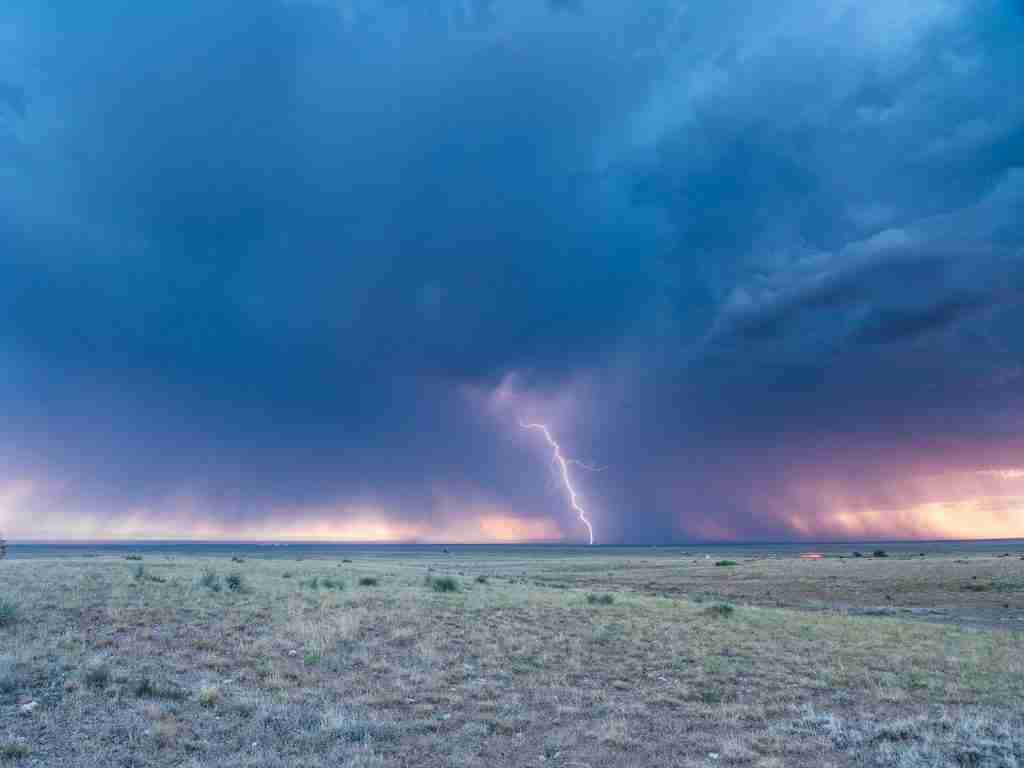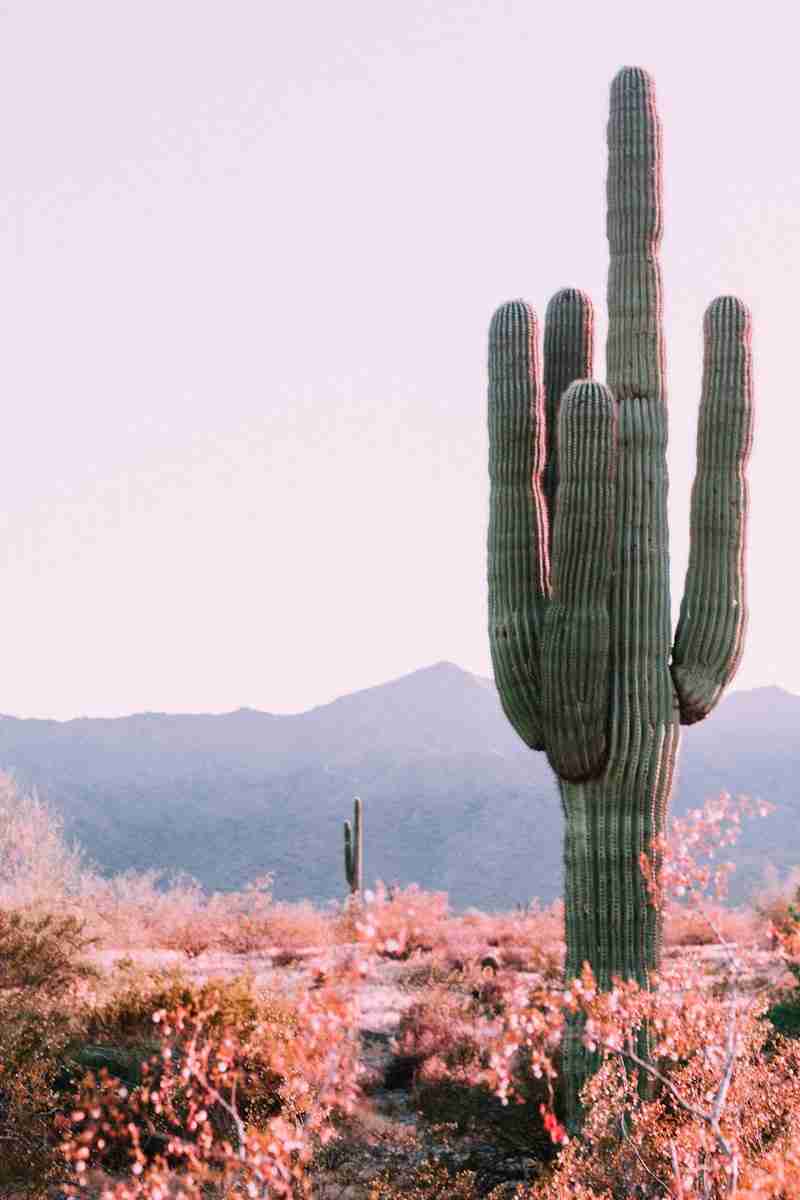24 Fun Facts About Arizona | The Secret’s Out
1. The Grand Canyon is one of the Seven Natural Wonders of the World.
Arizona’s most famous landmark is awe-inspiring. Carved by the Colorado River over millions of years, the Grand Canyon offers breathtaking views and a glimpse into the Earth’s geological history.
Visitors can hike its trails, raft its rapids, or simply marvel at its vastness. It’s an iconic American destination for a reason and a perfect start to our collection of fun facts about Arizona.
2. Arizona has more mountain ranges than any other state in the Mountain West.
While known for its deserts, Arizona also boasts impressive mountains. These ranges offer opportunities for hiking, camping, and scenic drives.
Whether you’re seeking cooler temperatures or winter sports, Arizona’s mountains offer a change of scenery. They showcase the surprising diversity of the state’s terrain.
3. A giant meteor impact created Meteor Crater in Northern Arizona.
Around 50,000 years ago, a meteor blasted a massive hole in the Arizona desert. This well-preserved crater is over a kilometer wide and offers a glimpse into the power of cosmic events.
Visitors can learn about the impact, walk along the crater rim, and even see fragments of the meteor. It’s a unique scientific attraction and a testament to the forces that shape our planet.
4. The world’s largest collection of rattlesnakes resides in Phoenix, Arizona.
If you have a fascination with these venomous reptiles, Phoenix is the place to be. It’s home to a collection featuring numerous rattlesnake species from around the world.
While certainly not for the faint of heart, this unique attraction offers a safe and educational way to learn about rattlesnakes. It provides a glimpse into the diverse – and sometimes surprising – wildlife of the Southwest.
5. The world’s first drive-in movie theater opened in Tucson, Arizona, in 1934.
Arizona claims a unique place in cinematic history. This innovative concept allowed moviegoers to enjoy films from the comfort of their cars.
While drive-ins have declined in popularity, they remain a nostalgic symbol of Americana. Arizona’s role in their invention highlights the state’s pioneering spirit.
6. Arizona observes its own time zone.
Most of Arizona does not follow Daylight Saving Time. This means its time aligns with Mountain Standard Time year-round.
This keeps the state’s daylight hours relatively consistent throughout the year. Visitors should be mindful of the time change when traveling in the state.
7. The London Bridge was relocated to Lake Havasu City in Arizona.
In a surprising feat of engineering, the original London Bridge was purchased by an entrepreneur in 1967 and rebuilt stone by stone in Arizona. It now spans a canal in Lake Havasu City, creating a unique blend of British history and desert landscape.
This unexpected landmark adds a quirky touch to the state’s diverse attractions. It stands as a testament to the power of ambition and perhaps, eccentricity.
8. Arizona is home to the largest reservation in the United States.

The Navajo Nation covers a vast expanse of land within Arizona, New Mexico, and Utah. It’s a sovereign nation with its own government and a fascinating cultural heritage.
Visitors can respectfully experience Navajo traditions, arts, and history. Respectful tourism contributes to the preservation of their culture, offering a valuable lesson in Arizona facts.
9. Arizona is one of the sunniest states in the United States.
Arizona’s nickname, “The Sunshine State,” is well-deserved. It boasts over 300 days of sunshine each year, making it attractive for outdoor enthusiasts and sun-seekers.
However, it’s important to remember sun safety measures in such a bright climate. Always remember sunscreen and hydration!
10. The saguaro cactus, a symbol of the Southwest, is only found in the Sonoran Desert.
This iconic giant cactus with its distinctive arms is synonymous with Arizona landscapes. Saguaros can live for hundreds of years and grow to towering heights.
Seeing a saguaro in its natural habitat is a quintessential Arizona experience. They symbolize the resilience of life in a harsh and beautiful environment.
11. Arizona is home to the Petrified Forest National Park.
This unique park preserves stunning examples of fossilized trees that date back millions of years. The colorful petrified wood showcases the remnants of ancient forests.
Visitors can hike among the fallen giants and imagine a vastly different prehistoric landscape. It’s a journey through deep time and a reminder of Earth’s ever-changing nature.
12. Arizona has more species of hummingbirds than any other state.

These tiny, vibrant birds are a common sight in Arizona gardens. Their dazzling colors and rapid movements add life to backyards and desert landscapes.
Birdwatchers flock to Arizona to catch sight of the various hummingbird species found there. It’s a reminder of the delicate and diverse wildlife that thrives in the state.
13. The official state neckwear of Arizona is the bolo tie.
Arizona embraces its Western heritage with this unique fashion statement. The bolo tie, featuring a decorative clasp on a braided cord, adds a touch of Southwestern flair to any outfit.
Whether you’re dressing up for a special occasion or just want to add some Arizona-inspired style to your look, a bolo tie is a fun and distinctive accessory.
14. Arizona is home to 22 national parks and monuments.
From the depths of the Grand Canyon to the towering saguaros of Saguaro National Park, Arizona showcases stunning natural beauty. These protected areas offer opportunities for hiking, camping, and simply soaking up the diverse landscapes of the American Southwest.
Arizona’s commitment to conservation ensures that these treasures will be preserved for generations to come. It’s a testament to the value the state places on its natural wonders and a key element when exploring facts about Arizona.
15. Arizona became the last of the 48 contiguous states to join the Union in 1912.
Arizona has a relatively short history as a U.S. state. Its path to statehood was long and complex, reflecting the evolving politics of the American West.
Arizona’s admission to the Union marked a significant milestone in the nation’s expansion. It’s a reminder that even the youngest states have rich historical legacies.
16. Arizona’s official state gemstone is turquoise.

Turquoise, with its beautiful blue-green hues, has long been associated with the American Southwest. Arizona’s rich history of mining includes the extraction of this precious gemstone.
Turquoise jewelry is a popular souvenir and a symbol of Arizona’s connection to its natural resources. It’s a reminder of the beauty that lies beneath the desert surface.
17. Arizona was the setting for numerous classic Western films.
The dramatic landscapes of Arizona provided the backdrop for countless iconic Western movies. John Wayne, Clint Eastwood, and many other stars rode its dusty trails and weathered its frontier towns.
You can still visit some of these famous filming locations and imagine yourself in a scene straight out of the movies. Arizona’s cinematic history adds to its larger-than-life feel and contributes to the collection of Arizona fun facts.
18. Tombstone, Arizona, was the site of the infamous Gunfight at the O.K. Corral.
Fans of Wild West history won’t want to miss Tombstone. This historic town is known for the legendary shootout between lawmen and outlaws in 1881.
Today, Tombstone recreates its past with staged gunfights, saloons, and museums dedicated to its rough-and-tumble history. It offers a captivating glimpse into a bygone era.
19. The world’s oldest rodeo is held in Prescott, Arizona.
Arizona’s cowboy culture is alive and well. The annual Prescott Frontier Days Rodeo has been thrilling audiences since 1888.
This historic event showcases traditional rodeo events like bull riding, barrel racing, and steer wrestling. It’s a celebration of Arizona’s ranching heritage and offers a taste of the Wild West.
20. Arizona experiences monsoon storms during the summer months.

Arizona’s weather patterns include a dramatic monsoon season. These intense thunderstorms bring heavy rains, lightning, and strong winds, transforming the dry desert landscape.
While monsoons can cause disruptions, they are essential for replenishing water sources and sparking bursts of desert wildflowers. They are a reminder of the dynamic forces of nature in Arizona.
21. The Superstition Mountains are rumored to hold a lost gold mine.
Legend has it that a vast treasure, known as the Lost Dutchman’s Gold Mine, is hidden somewhere within these rugged mountains. Many adventurers have sought this elusive fortune, but the mystery remains unsolved.
Whether or not the gold exists, the Superstition Mountains offer beautiful hiking and a touch of treasure-hunting lore for adventurous souls. They’re a testament to the enduring power of myth and the captivating allure of the unknown.
22. Cleopatra’s Needle, an ancient Egyptian obelisk, was nearly relocated to Arizona.
In the late 19th century, there was a serious proposal to move this towering monument to Arizona. While the plan never materialized, it remains a surprising and little-known fact about the state.
It’s a testament to the ambitions and quirky ideas that have shaped Arizona’s history. It would surely have made an even more unusual addition to the state’s diverse attractions.
23. The official state mammal of Arizona is the ringtail.
This lesser-known creature is a relative of the raccoon with a long, striped tail. Ringtails are nocturnal and skilled climbers, making them elusive but fascinating inhabitants of Arizona’s deserts and canyons.
Their designation as the state mammal highlights the uniqueness of Arizona’s wildlife. It encourages residents and visitors alike to learn more about the unexpected animal neighbors.
24. Arizona is known for its stunning sunsets.

The vast desert skies and lack of light pollution make Arizona a prime spot for breathtaking sunsets. The vibrant colors painting the horizon each evening are an iconic part of the Arizona experience.
Catching an Arizona sunset is a must-do for any visitor. It’s a peaceful reminder of the natural beauty that surrounds us.
FAQs
Arizona’s history includes events like becoming the 48th state in 1912, the Old West era with famous outlaws like Wyatt Earp, and its rich Native American heritage seen in sites such as the ancient cliff dwellings of the Ancestral Puebloans.
Arizona State University is renowned for its innovation, research, and a wide range of academic programs across disciplines. It boasts a vibrant campus life, with a focus on sustainability and community engagement, making it a top choice for students seeking a dynamic educational experience.
Arizona teas are popular for their variety of flavors, including Green Tea with Ginseng and Honey, and distinctive tall cans. Originating in Brooklyn, New York, these teas have become iconic for their affordable prices and refreshing taste, enjoyed by people of all ages.
Arizona is known for its refreshing teas, lemonades, and other beverages that are enjoyed worldwide. The brand’s wide array of drinks, from fruit punches to energy shots, offers a taste of the southwestern spirit and has gained a loyal following since its founding in 1992.
No, Arizona does not observe Daylight Saving Time, remaining on Mountain Standard Time (MST) throughout the year. This unique feature means that while most of the country adjusts its clocks, Arizona maintains a consistent time, leading to some interesting time differences during certain parts of the year for those traveling or doing business across state lines.







